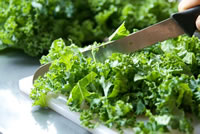Well, this point came much sooner than I had anticipated. I’ve already shared all of my family’s favourite meals, so now I have to start trying new recipes. This is good for me – stepping out of my comfort zone for the next 10 days could have some interesting results. Hopefully my family will like SOME of my creations!
To make things even more interesting, I purchased a Vita-Mix today and should be really shaking things up in the juicing department as soon as I can figure out how to set it up. Refresh cookbook has lots of ideas for juice combinations which I will be trying out over the next couple of days. Will keep you informed on how I sneak in kefir, protein powder, spirulina and other great healing aids – and what the family thinks of these healthy green drinks. Failing everything else, at least I will be eating well – because my taste buds seem to be much more interested in trying out new flavours than my teens.
So, what’s for dinner tonight you ask? Are you ready – cause it’s pretty exciting!
From the cookbook, Vegetarian Cooking for Everyone by Deborah Madison, we’re trying the Winter Squash Galette with a yeasted tart dough. It will be accompanied by a kale salad with mango (sweet flavours to compliment the squash) and a Quinoa with red peppers, leeks and carrots. I have a couple of hockey boys sleeping over tonight so I need filler food! I’ve also got a couple of steaks to BBQ in case they’re still starving.
Yeasted Tart Dough with Olive Oil
2 tsps active dry yeast
1/2 tsp sugar
1/2 cup warm water
3 Tbsp olive oil
1 egg, lightly beaten
3/8 tsp salt (have you ever heard of such a thing? I didn’t realize that I had a 1/8th tsp measure)
1 3/4 cup flour, as needed (I’m using whole spelt flour tonight)
Dissolve the yeast and sugar in the water in a medium bowl and let stand until bubbly, about 10 minutes. Add the oil, egg and salt, then stir in flour. When the dough is too stiff to work with a spoon, turn it onto the counter and knead until smooth and elastic, about 4 minutes.
Add more flour if necessary to keep it from sticking.
Set the dough in an oiled bowl, turn it over to coat, cover with a damp towel and let rise until doubled in bulk, 45 minutes to 1 hour.
Winter Squash Galette
Yeasted Tart Dough recipe
2 1/2 lbs winter squash (I used butternut)
1 small head garlic, cloves separated but not peeled
1 Tbsp olive oil, plus extra for the squash
1 onion, finely diced
12 fresh sage leaves, chopped, or 2 tsp dried
1/2 cup freshly grated parmesan cheese
Salt and freshly milled pepper
1 egg, beaten
Make the dough. Preheat the oven to 375°F. Cut the squash in half, scrape out the seeds, and brush the surface with oil. Stuff the garlic into the cavities and place the squash cut side down on parchment lined sheet. Bake until flesh is tender, about 40 minutes. Scoop out the squash and squeeze the garlic cloves. Mash them together with a fork until fairly smooth, leaving some texture.
Warm 1 Tbsp oil in skilled over medium heat. Add the onion, and sage and cook until onion is soft and beginning to colour about 12 minutes. Add it to the squash with the grated cheese and season with salt and pepper.
Roll out dough into 14-inch circle and spread the filling over it, leaving a border of 2 inches or more. Pleat the dough over the filling, then brush the edges with beaten egg. Bake until the crust is golden, about 25 minutes.
I think this will be delicious with the salad. I’ll definitely add some maple syrup to the dressing and will make the salad while the squash is roasting so it can marinate for at least 2 hours.
NOTE: After making this tart, I suggest that you roll it out on either the cookie sheet or pizza stone that you intend to bake it on. It is impossible to move when full. Another suggestion – to make this tart faster, you could use a phyllo pastry crust. This crust is quite doughy, more like a pizza crust.

